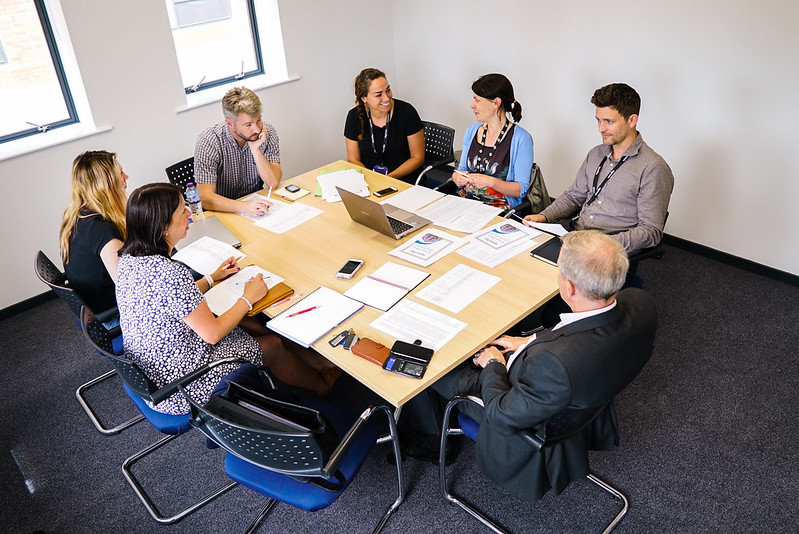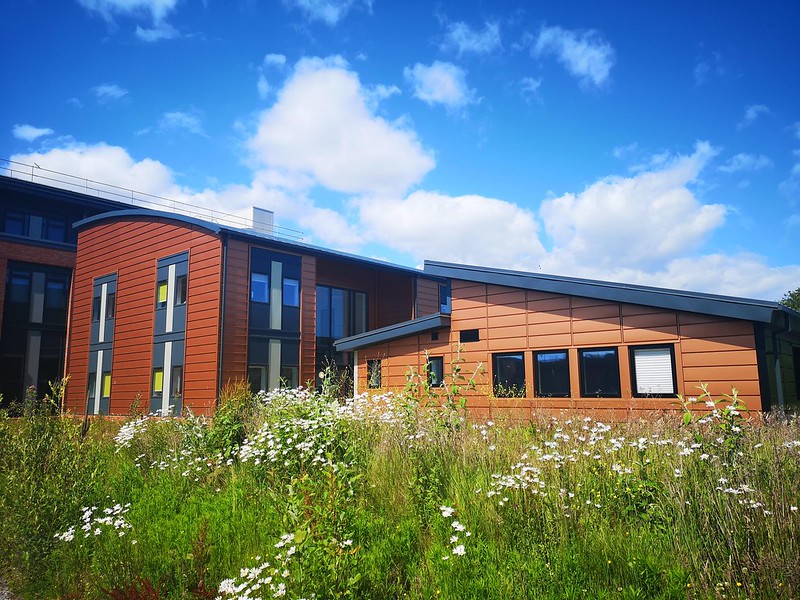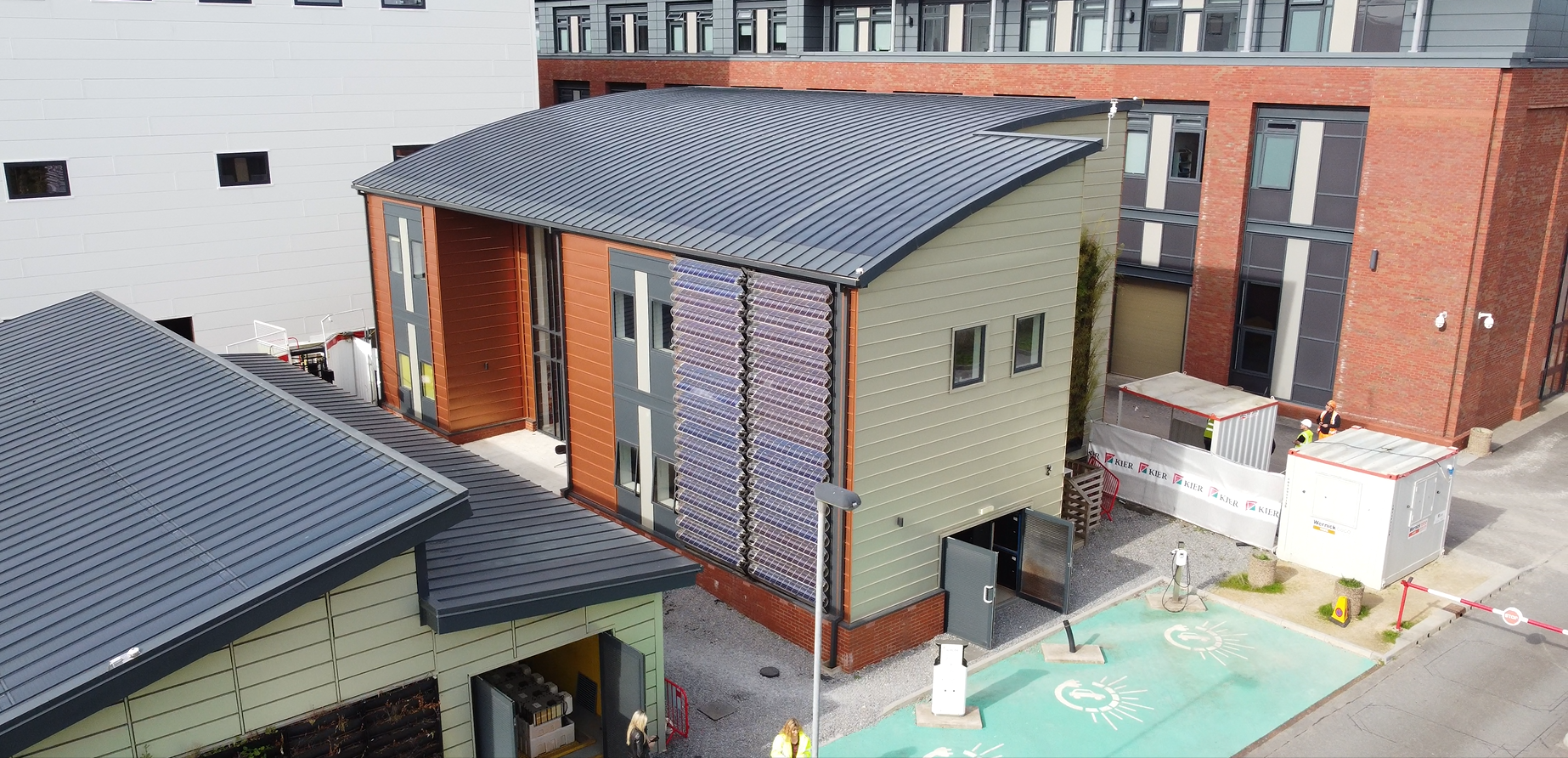
The Active Office
The Active Office is the flagship building in SPECIFIC’s full-scale demonstration programme, which aims to test and prove the Active Buildings concept. This ‘zero carbon ready’ building was constructed using cutting-edge off-site manufacturing techniques, and incorporates innovative technologies that generate, store and release solar energy.
Built in 2018, the Active Office is a low carbon office designed to generate more energy than it uses over the annual cycle. It was designed using our ‘Active Building’ principles, which means it combines a range of renewable energy technologies, which work together in one system to generate, store, and release heat and electricity.
Crucially, the Office’s energy storage and smart control systems enable the building to interact with the energy grid in a flexible way, controlling when energy is exported to and imported from the grid. This flexibility will become increasingly critical as we transition to zero carbon buildings and decarbonise both heat and vehicles. We believe this is how all buildings must operate in the future. Furthermore, we have proven that the technology for zero carbon buildings is available now.
The Active Office and the Active Classroom
The Office is located next door to The Active Classroom, which was the UK’s first energy positive classroom and named Project of the Year 2018 by RICS Wales. The two buildings are able to share energy with each other, electric vehicles and Swansea University campus. This ability to trade energy demonstrates how the Active Buildings approach can be applied in an energy-resilient solar-powered community.
Whilst the Active Classroom was used to test novel technologies at early stages of development, the Active Office uses only commercially available technologies and existing supply chains. This demonstrates that the ‘Active Building’ approach is deployable now. The technology exists, but additional suport mechanisms such as updated policies and regulations, funding, and net zero training, are needed to further accelerate the concept and enable the UK to reach its net zero carbon target.
Technologies for Zero Carbon Buildings
Naked Energy Virtu® PVT Tubes
The Virtu PVT (photovoltaic thermal) tubes by Naked Energy provide electrical energy (2.4kWp) as well as thermal energy (9.6kWp) to the Office.
By efficiently drawing heat away from the solar panel for space heating, the photovoltaic cells maintain an optimum operating temperature which results in a significantly higher electrical output than standard photovoltaic panels.
This was the first commercial installation of the tubes and it helped the company attract £5m investment.
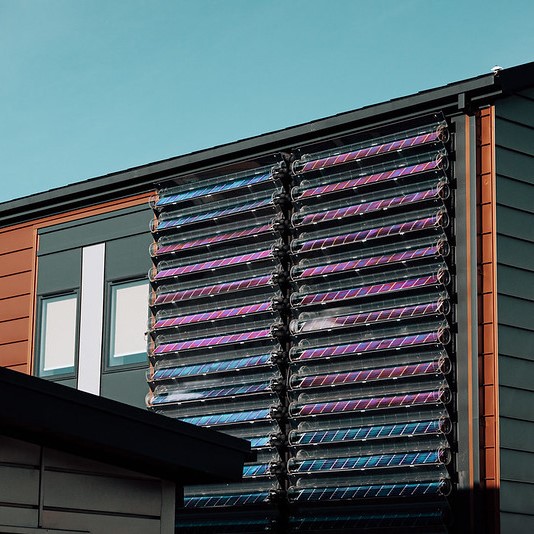
BIPVco Solar Roof
The Active Office was also the first commercial installation of BIPVco’s photovoltaic roof on a curved profile. The 93 modules provide an energy output of 22kWp for our low carbon office.
The roof uses CIGS (Copper Indium Gallium Selenide) thin film solar cells to convert sunlight into electricity. Factory applied PV cells are bonded directly onto the steel to create a roofing system that can be installed in the same way as a conventional roof.
The panels are more flexible and lightweight than traditional crystalline based panels. They also perform better in low light conditions.
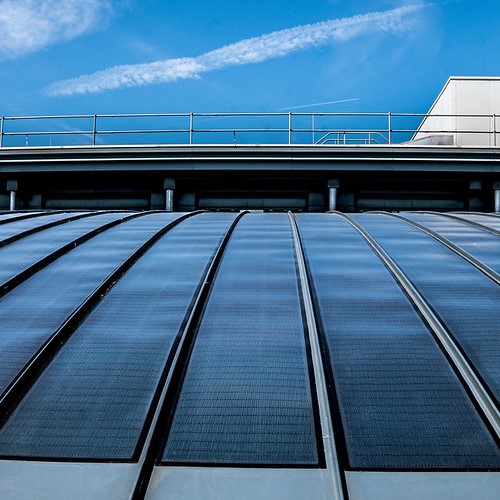
Wernick Modular Construction
The Active Office was constructed off-site by Wernick. The 12 modules were delivered to site and carefully craned into position in just three days!
Modular construction is a process where a building, or parts of a building, are manufactured off-site in a factory under controlled conditions. The parts are then transported to site where they are connected to form a complete building.
This method of construction has many advantages over traditional build techniques: no delays due to on-site conditions such as inclement weather; improved safety; better quality; reduced waste, which has both environmental and cost benefits; and faster overall construction time.
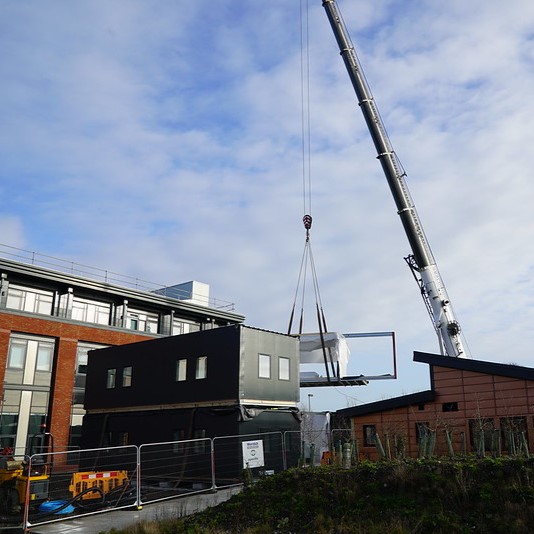
Dulas Installation of BYD Batteries
Energy storage is essential to a low carbon office building. Our Active Office has 110kWh of BYD lithium batteries supported by Victron charge controllers and inverters. The system was installed by Dulas as a turnkey solution to the building’s electrical storage requirements.
The equipment provides a flexible and controllable way to determine where the electrical energy comes from and is delivered to. We have the option to operate entirely off grid via solar generated power. We can also supplement the solar power with grid electricity directly or via the battery system.
Additionally, the system enables export of both spare power being generated at that point in time, or previously stored power to investigate timeshifting of export to enable peak shaving or tariff benefits.

Cisco Smart Network
The Cisco Network Architecture underpins the communications and intelligent building systems that manage our low carbon office.
The smart system is capable of DC power distribution for services such as integrated, smart, low voltage lighting, which is controlled by occupancy detectors.
The Cisco Wi-Fi design supports location based services enabling personal hot desking and building utilisation assessment. The solution also supports innovative IOT applications with smart sensors and is scalable for future data and communication requirements.
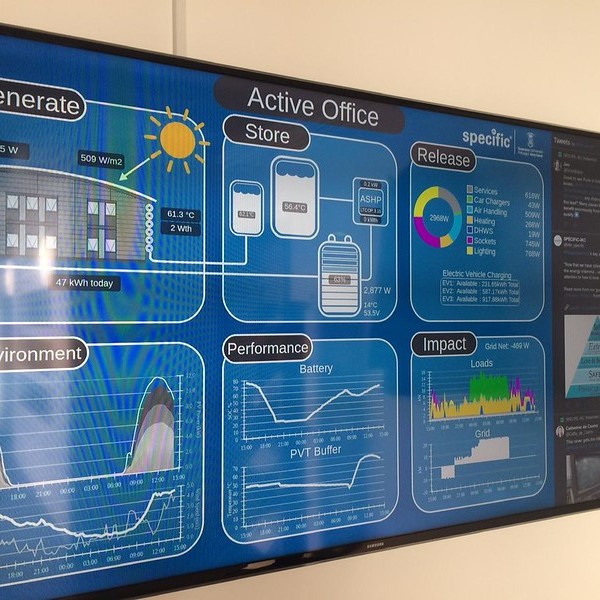
Electric Vehicle Charging
Linked to the Cisco Smart Network are the electric vehicle charging points. The intelligent control system can locate vehicles, determine their state-of-charge, and ascertain whether any charging points are available.
EVs provide additional electrical storage and as technology develops, bi-directional charging will allow EVs to deliver energy to the buildings as required.
The Active Office also provides a platform for testing novel EV products. We work with business and organisations to offer advice and insight into performance of novel technologies as well as promoting EV uptake.

Funded by: Innovate UK | Sponsored by: Tata Steel and Cisco
Project Partners: Wernick, BIPVco, Naked Energy, NSG, Akzo Nobel, Dulas, Pursey & Ball.

